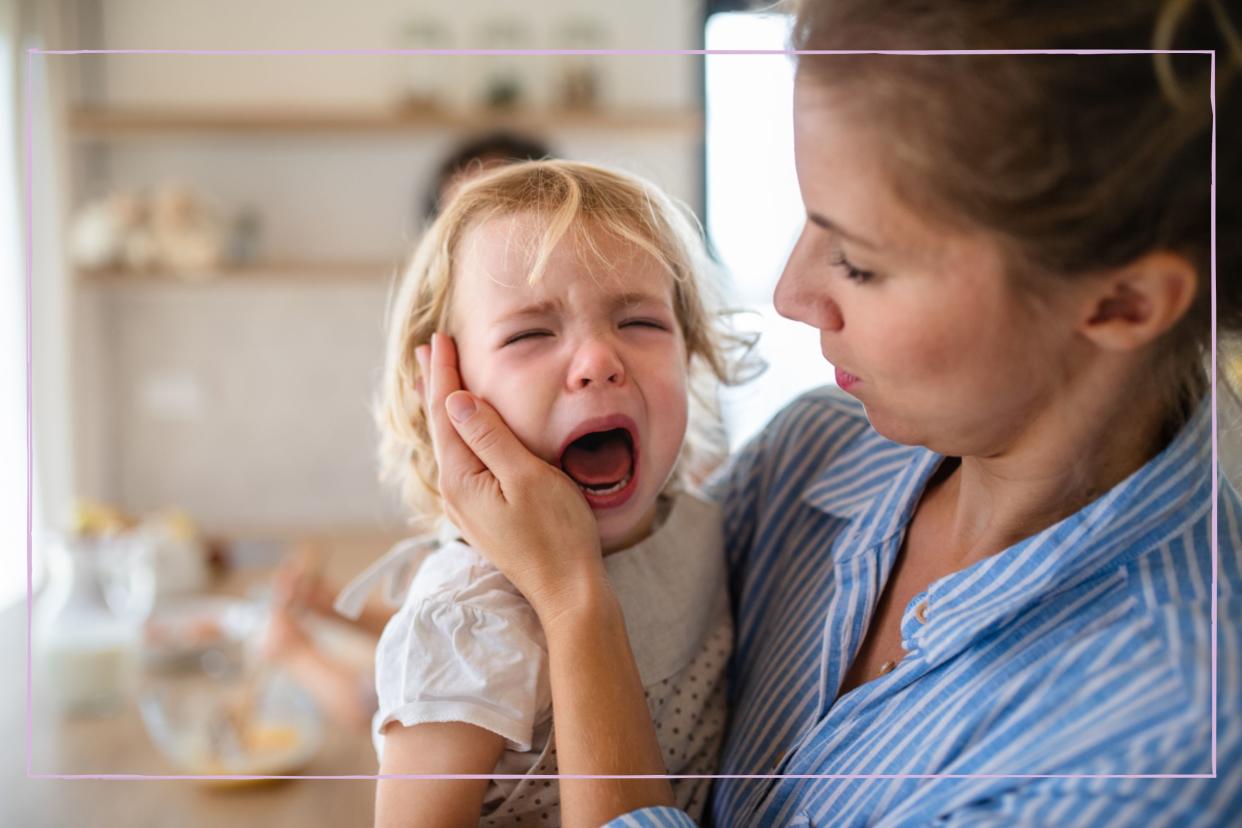Parents, do you know what H.E.L.P. stands for? Psychologists swear by this acronym to navigate those tough parenting moments we all face

Remembering this acronym can navigate tough moments with kids of any age, according to psychologists. We explain how you can try it yourself...
Raising kids is one of the hardest things any person can do. Just when you think you've got your parenting style figured out and are in the swing of family life, your little one hits a new child development stage and you feel like you're back at square one. When emotions are high, it's normal for kids to have a 'meltdown' (in fact, tantrums can be healthy), but that doesn't make it any easier for the parents to deal with.
That's why we're always on the hunt for expert-led tips and guidance that can help families navigate difficult moments. Parenting experts and registered psychologists Tania Johnson and Tammy Schamuhn recently shared their expert advice with CNBC - and it's so easy to remember.
They say that their acronym, H.E.L.P., can guide parents when it comes to navigating difficult moments with kids of any age. It stands for Halt, Empathy, Limits and Proximity - and here's how you can use it yourself.
H is for Halt
Children often convey their struggles through misbehaviour or meltdowns, and deal with discomfort and stress through tantrums and crying. It can feel really hard to ignore the 'instant reaction' a tantrum can cause, and while it's easier said than done, before you react to their behaviour, try to stop and ask yourself why they might be acting this way.
The experts explain, "Self-awareness can save us from falling into old patterns we adopted from our own family of origin and allow us to act from a place of compassion and intention." As a parent, try to see through the behaviour and get to the heart of the issue.
They add that, particularly with older children, you could take an entire day or sleep on it while 'halting', before moving on to E, L, and P.
E is for Empathy
This step is all about making sure your children feel safe, seen, and heard. Tammy and Tania suggest some of the steps you can take to show your child you believe them when they tell you how they feel:
Welcome their feelings. Lean in, get on their level, and make eye contact.
Acknowledge and validate their feelings. With a soft tone, say, “I can see you’re feeling so …” “You must be feeling so …” or “You’re so ____ with me right now.”
Really listen. Summarise and/or paraphrase (e.g., “So what I’m hearing you say is your friends ignored you all day, and you felt really lonely”) and clarify if needed (“So no one talked to you at lunch and you felt really sad, am I understanding you correctly?”).
Don’t judge. Feelings are neither good nor bad. And while behaviour may not be acceptable, our children’s feelings always are.
Don’t try to fix it. Allow for the crying, screaming, or verbal unloading. It’s about our children being seen and heard, not fixing the behaviour or problem.
Say less. Talking too much overwhelms kids. This is more about our presence.
Regulate your own emotions. Breathe and take a moment, or several, to compose and ground yourself. Ask yourself if your reaction is about you or your child.
L is for Limits
When your child is exhibiting big emotions, draw boundaries, create structure, and teach more appropriate behaviour. You can do this by first validating the emotion, then conveying that the behaviour was not acceptable and offering alternatives.
Remember that boundaries focus on your own behaviour and what you will or will not tolerate, not what you expect the child to do. If you're still unsure, in a separate article a psychotherapist has explained what setting a boundary with your kids really sounds like.
Tania and Tammy give an example for a child who gets agitated at the dinner table: "I can see you’re so frustrated right now, you don’t want to eat your dinner. But you may not throw things when you’re upset. You may tell us that you’re frustrated or take a quick walk and come back."
P is for Proximity
You might be tempted to walk away because you’re overwhelmed by your child's big emotions or because you don't want to indulge them. However, Tammy and Tania say, "To help calm our children, we need to stay close."
They add, "Look for the moment when their anger or frustration shifts into sadness. This is the golden moment of connection we don’t want to miss. It’s the key to children learning they can be vulnerable and show their authentic self."
If it is too hard and you do need to step away then that's ok - explain to them that you need 30 seconds to breathe on your own and that you'll come back. Never underestimate the power a parent's physical presence holds when it comes to self-regulating emotions.
In other family news, this is why your teenager thinks you don't understand them (and how to deal with it) and a child psychotherapist has revealed why toddlers hit their parents. Elsewhere, here's how you can help your child develop gratitude as they grow.

 Yahoo News
Yahoo News 
